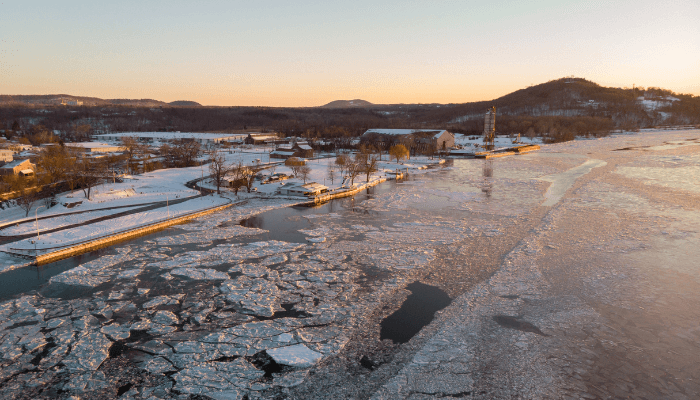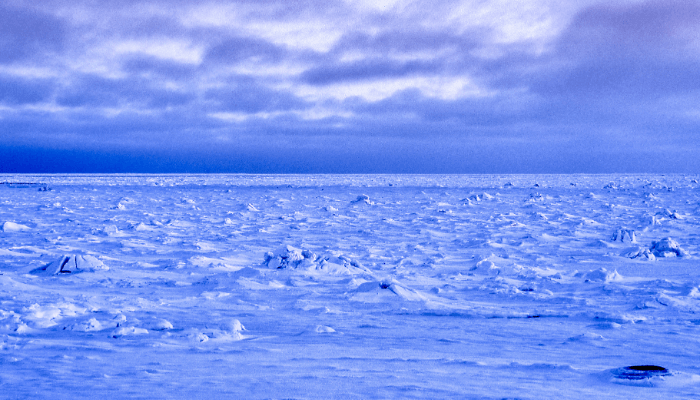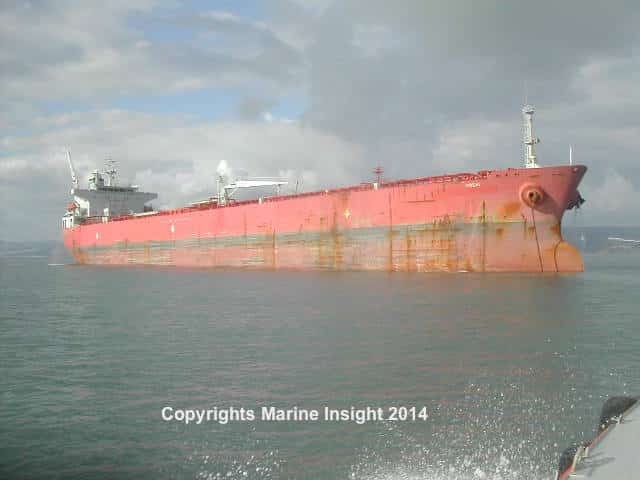10 Amazing Hudson Bay Facts
Hudson Bay is an inland marginal sea of the Arctic Ocean. It is a body of saltwater in northeastern Canada, north of Ontario, west of Quebec, northeast of Manitoba, and southeast of Nunavut. Its southern arm is known as James Bay.
The drainage basin of the Hudson Bay comprises parts of 5 Canadian provinces, 2 Canadian territories, and smaller portions of 4 U.S. states.
This article will discuss 10 amazing facts about the Hudson Bay.
1. Named after Englishman Henry Hudson
Henry Hudson was an Englishman who sailed for the Dutch East India Company. He discovered the Bay in 1611 while searching for the Northwest Passage to Asia. One of the most vital waterways in America, the Hudson River, is also named after him. He sailed up the river in 1609.
After finding the Hudson Bay, he spent a harsh winter on the bay’s shores and pushed his crew members to continue the search for the Northwest Passage. A mutiny broke out, and the crew sent him adrift in a boat from the Bay. Nobody knows what happened to him.
After Henry Hudson, several others followed, including Robert Bylot, Thomas Button and Thomas James. Still, the western coast of the Bay could not be mapped until the early 1820s and the first bathymetric investigations of the region were carried out by Canadian experts in the 1930s.
2. Second Largest Bay in the World
The Hudson Bay covers 1,230,000 square km, making it the world’s second-largest bay after the Bay of Bengal, which spans 2,172,000 km2. Hudson Bay is 1370 km long and 1050 km wide. It has an average depth of 100 m and a maximum of 270 m.

Its western shores form the Hudson Bay Lowlands. The region is drained by many rivers, which grow a characteristic vegetation called muskeg. Most of the landform was shaped by glaciers, and signs of several beachfronts can be seen from the shore. A huge part of the lowlands lies in the Polar Beat Provincial Park and the Waspusk National Park. The eastern shores are rocky and hilly, with a boreal forest.
3. Home to Belcher and Ottawa Islands
Hudson Bay has many islands, especially near the eastern shores, all part of Nunavut’s territory. One is the Belcher Islands Archipelago, which has 1500 islands spanning around 13,000 km2. They were named after Elward Belcher, who led an Arctic Expedition. The archipelago was mapped in 1915, and large iron ore deposits were found.
Another major island group is the Ottawa Islands, a group of 24 small islands that are uninhabited. They lie close to the northwest coast of Quebec’s Ungava Peninsula. Both island groups are breeding grounds for the Bay’s subspecies of the Common Eider.
4. Hudson Bay Coast is Sparsely Populated
There are just a dozen villages along the coast of Hudson Bay. Most of these settlements were established in the 17th and 18th centuries by the Hudson Bay Company. They grew as trading posts and are now the oldest settlements in Canada. Since the company’s trading posts and stores were closed in the latter half of the 20th century, most coastal villages are now populated by the Cree and the Inuit People.
The region around James Bay is populated by the Algonquian group, while Churchill area is inhabited by Chipewyan groups. Inuit and Cree indigenous groups live along the northern and eastern coasts of the Hudson Bay. Major settlements along Hudson Bay include Arviat, Coral Harbour, Rankin Inlet, Churchill, Whale Cove, Fort Albany, and Sanikiluaq.
However, population density remains low in the area. Canadian Government has designated the Hudson Bay area as a mare clausum or closed area for conservation purposes.
5. Has very low temperatures throughout the year
Hudson Bay was the centre of growth for the major ice sheet that covered the northern part of North America in the last ice age. The entire region has low temperatures throughout the year.

Water temperature ranges from 8-9 degrees Celsius on the bay’s western side in summer. It remains frozen from December to June.
6. Has a diverse marine ecosystem
Hudson Bay supports diverse marine ecosystems, which include aquatic and coastal habitats hosting many arctic and sub-arctic species, some of which are native to the region while others migrate here for breeding and feeding purposes.
Several small crustaceans occupy the surface waters of the Hudson Bay. They are the source of food for sea urchins, starfishes, molluscs, and other invertebrates that live at the bottom of the Bay.
The estuaries and rivers of the Hudson Bay create varied habitats and spawning areas for fish like salmon, polar plaice, arctic char, cod and halibut, along with other freshwater fish. You can find dolphins, killer whales and walruses in the northern part of Hudson Bay. The floating ice sheets support seals, Arctic foxes and the polar bear.
Different types of seals, like harbor seals, ringed seals, and bearded seals, reside in Hudson Bay all year, while harp seals and hooded seals are seasonal visitors.
Around 130 Avian species, including raptors, waders, waterfowl, etc, migrate to the Hudson Bay during summer. Of these 130 bird species, 100 find breeding areas on the shore. Additionally, cranes, ducks, herons, pelicans, falcons, eagles, and owls are also found in Hudson Bay.
7. Lower levels of salinity
Hudson Bay has a salinity that is lower than the world’s ocean on average. A low evaporation rate is the main cause since the bay is covered with ice for most of the year. Other reasons include the large volume of terrestrial runoff that enters the Bay, which is around 700 km3 annually.
The watershed spans most of Canada, with several rivers and streams flowing into the Bay and its limited connection with the Arctic Ocean. The annual freezing and thawing of ice alters the salinity of the surface water.

A result of the lower salinity levels is that the freezing point of the water is higher than in the other world’s oceans, reducing the time that the bay remains free from ice. An increase in river inflows in winter has reduced the season of ice by over a month since the 1950s.
The lower salinity also affects the distribution and prevalence of microalgae. Research shows that the lower salinity of the Hudson Bay limits the growth of microalgae, which leads to a significant change in biomass along the Bay’s salinity gradient.
8. Has a region of below-average gravity
When our planet’s gravitational field was mapped in the early 1960s, an area of below-average gravity was found in the Hudson Bay region. It was thought to be the consequence of the earth’s crust remaining depressed from the weight of the Laurentide ice sheet during the most recent ice age.
However, detailed research and data taken by the GRACE satellite suggested that this cannot be used to justify the entirely of the gravitational anomaly in this part of the world. Some experts think convection in the underlying mantle might be a possible reason.
The Nastapoka arc is a geological feature on the southern coast of Hudson Bay. It is a circular arc, and the Belcher Islands form the central uplift area. Given its near-perfect circular shape, it has been thought to be a remnant of an ancient impact crater; however, no proof has been found to support this theory. Another explanation for the arc’s origin is glacial loading during the ice age.
9. Economy of Hudson Bay
The Bay’s location offers magnificent views of unspoiled wilderness and abundant wildlife. It is known for forestry, mining, snowmobiling trails, agriculture and a friendly community of people.

Some of the most prominent human activities here include hunting, fishing and trapping animals. The Hudson Bay Lowlands span through northern Ontario and northeastern Manitoba. This region is characterised by sedimentary and volcanic rocks and has deposits of gold, nickel, zinc and copper.
10. Brief History
The discovery of the Bay was fruitful for the Hudson Bay Company, which came up in 1670. It helped them further their fur business and provided other traders access to the inland destinations in Canada.
Later, the British Crown awarded it a trading monopoly on the Hudson Bay drainage basin, Rupert’s Land. This was contested by France, but it finally gave up its claims in the 1713 Treaty of Utrecht.
The Hudson Bay Company built many forts and trading posts along the mouth of rivers like Fort Severn, Manitoba, Churchill, York Factory, Ontario, etc. This allowed them to trade with indigenous people who brought fur to the posts from where they were taken to Europe. These posts were used until the advent of the 20th century. The land became a part of Canadian territory after the company’s trade monopoly was abolished.
In the 19th century, European and U.S whaling ships sailed the Hudson Bay waters looking for bowhead whales. In 1903, workers of a Scottish whaling station on Southampton Island transmitted a gastrointestinal infection to the village of Sallirmiut, an indigenous community. Just one woman and four children survived the infection and were taken in by local Inuit families. The whaling industry collapsed by the 1920s.
The Canadian government wanted to develop the Bay for navigation, which led to the establishment of Churchill, Manitoba, as a deepsea port for exporting wheat in 1929 after attempts at Port Nelson failed.
You might also like to read-
- 10 Important Canals In The United States
- 10 Titanic Captain Facts You Might Not Know
- 15 Longest Straits In The World
- 10 Timor Sea Facts You Might Not Know
- 8 Interesting Facts About Cape Route

About Author
Zahra is an alumna of Miranda House, University of Delhi. She is an avid writer, possessing immaculate research and editing skills. Author of several academic papers, she has also worked as a freelance writer, producing many technical, creative and marketing pieces. A true aesthete at heart, she loves books a little more than anything else.
Disclaimer :
The information contained in this website is for general information purposes only. While we endeavour to keep the information up to date and correct, we make no representations or warranties of any kind, express or implied, about the completeness, accuracy, reliability, suitability or availability with respect to the website or the information, products, services, or related graphics contained on the website for any purpose. Any reliance you place on such information is therefore strictly at your own risk.
In no event will we be liable for any loss or damage including without limitation, indirect or consequential loss or damage, or any loss or damage whatsoever arising from loss of data or profits arising out of, or in connection with, the use of this website.
Disclaimer :
The information contained in this website is for general information purposes only. While we endeavour to keep the information up to date and correct, we make no representations or warranties of any kind, express or implied, about the completeness, accuracy, reliability, suitability or availability with respect to the website or the information, products, services, or related graphics contained on the website for any purpose. Any reliance you place on such information is therefore strictly at your own risk.
Related Articles
Do you have info to share with us ? Suggest a correction
Daily Maritime News, Straight To Your Inbox
Sign Up To Get Daily Newsletters
Join over 60k+ people who read our daily newsletters
By subscribing, you agree to our Privacy Policy and may receive occasional deal communications; you can unsubscribe anytime.






BE THE FIRST TO COMMENT